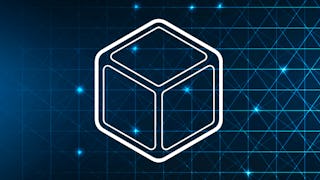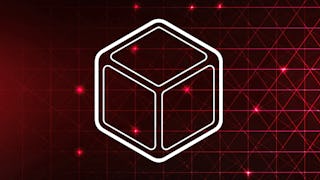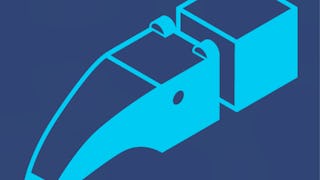This course discusses the limitations of the Internet for business and economic activity and explains how blockchain technology represents the way forward. After completing this course, you will be able to explain what blockchain is, how it works, and why it is revolutionary. You will learn key concepts such as mining, hashing, proof-of-work, public key cryptography, and the double-spend problem. You’ll be able to describe seven design principles for blockchain technology, and the challenges facing the people developing it. By the end of this course, you’ll learn how and why transacting on the blockchain can help us bring about a future that is faster, fairer, and more distributed than the world we inhabit today.

Unlock access to 10,000+ courses with Coursera Plus. Start 7-Day free trial.

Introduction to Blockchain for Global Commerce
This course is part of Web3 and Blockchain in Global Commerce Specialization


Instructors: Don Tapscott
6,053 already enrolled
Included with
(38 reviews)
What you'll learn
How blockchain works, and how trust is established in a pre- and post-blockchain world
Nine types of digital assets, including cryptocurrencies, protocol tokens, NFTs, stablecoins, securities tokens, governance tokens, and CBDCs
What smart contracts are, the phases of a smart contract deal cycle, and various examples and applications of smart contracts
Blockchain design principles, and challenge areas associated with implementing blockchain technology
Skills you'll gain
Details to know

Add to your LinkedIn profile
36 assignments
See how employees at top companies are mastering in-demand skills

Build your subject-matter expertise
- Learn new concepts from industry experts
- Gain a foundational understanding of a subject or tool
- Develop job-relevant skills with hands-on projects
- Earn a shareable career certificate

There are 6 modules in this course
The Internet connects billions of people around the world, and is great for communicating and collaborating online. However, because it was built for moving and storing information, and not value, it has done little to change the way we do business. Now, for the first time in human history, two or more parties anywhere in the world can transact and do business peer to peer using the blockchain. In this module we introduce blockchain as “the trust protocol,” and explain how it represents the second era of the Internet. We describe how blockchain technology establishes trust—not through powerful intermediaries, but rather through collaboration, cryptography and clever code.
What's included
12 videos7 readings6 assignments3 discussion prompts1 plugin
We believe that the next era of the digital economy can be shaped around a set of blockchain design principles, which can be used for creating software, services, reinventing business models, markets, organizations, and even governments. This module frames the blockchain revolution around seven design principles. For each principle we describe a current problem to be solved, identify “blockchain breakthroughs” to these problems, and discuss the implications of these breakthroughs on the digital economy. We hope that these design principles will assist learners in contemplating their roles and their futures in the blockchain revolution.
What's included
12 videos8 readings6 assignments
Blockchain is the first native digital medium for value. Consequently, we are witnessing one of the largest transformations of wealth in human history—from paper-based analog assets to digital ones. In this module, students will learn about nine different kinds of cryptoassets, including cryptocurrencies, protocol tokens, non-fungible tokens (NFTs), stablecoins, securities tokens, governance tokens, exchange tokens, natural asset tokens, and central bank digital currencies (CBDCs).
What's included
12 videos11 readings4 assignments1 discussion prompt
In this module, you will learn what smart contracts are and how they work. We will discuss how blockchain-based smart contracts can enable individuals and organizations to reduce transaction costs, minimize the need for third-party intermediaries, and improve productivity, security, and privacy.
What's included
11 videos4 readings5 assignments2 discussion prompts
The advent of blockchain technology forces us to reconsider the upside and downside of public revelation of transactions and contracts. The implementation, application, and possible regulation of distributed ledgers involve choices that will critically affect information disclosure and economic interactions. Whether the ledger is public and permissionless, such as the Bitcoin or Ethereum blockchains, or private and permissioned, such as the Ripple or Hyperledger implementations, in principle transactions on a blockchain have a high native level of transparency. In this module, you will learn how privacy can be protected in both public and private ledgers using both procedural and technological methods.
What's included
13 videos4 readings5 assignments1 discussion prompt
Like every revolutionary technology, blockchain has its upside and its downside. In this module we discuss ten implementation challenges which must be overcome as we transition to the second era of the Internet. For each challenge, you will also learn about potential solutions and what we can do to ensure the fulfillment of the blockchain’s promise.
What's included
16 videos11 readings10 assignments1 discussion prompt
Earn a career certificate
Add this credential to your LinkedIn profile, resume, or CV. Share it on social media and in your performance review.
Instructors


Offered by
Explore more from Business Essentials
 Status: Free Trial
Status: Free Trial Status: Free Trial
Status: Free Trial Status: Free Trial
Status: Free Trial Status: Free Trial
Status: Free TrialUniversity of California, Irvine
Why people choose Coursera for their career




Learner reviews
38 reviews
- 5 stars
71.05%
- 4 stars
26.31%
- 3 stars
0%
- 2 stars
2.63%
- 1 star
0%
Showing 3 of 38
Reviewed on May 15, 2023
I would definitely and highly recommend this course to anyone and everyone, it is imperative that people understand the state of the internet and where it is going, this course does a good job
Reviewed on Apr 8, 2023
A very well curated and explained in such a way that even a non-tech person can easily understand blockchain technology.

Open new doors with Coursera Plus
Unlimited access to 10,000+ world-class courses, hands-on projects, and job-ready certificate programs - all included in your subscription
Advance your career with an online degree
Earn a degree from world-class universities - 100% online
Join over 3,400 global companies that choose Coursera for Business
Upskill your employees to excel in the digital economy
Frequently asked questions
To access the course materials, assignments and to earn a Certificate, you will need to purchase the Certificate experience when you enroll in a course. You can try a Free Trial instead, or apply for Financial Aid. The course may offer 'Full Course, No Certificate' instead. This option lets you see all course materials, submit required assessments, and get a final grade. This also means that you will not be able to purchase a Certificate experience.
When you enroll in the course, you get access to all of the courses in the Specialization, and you earn a certificate when you complete the work. Your electronic Certificate will be added to your Accomplishments page - from there, you can print your Certificate or add it to your LinkedIn profile.
Yes. In select learning programs, you can apply for financial aid or a scholarship if you can’t afford the enrollment fee. If fin aid or scholarship is available for your learning program selection, you’ll find a link to apply on the description page.
More questions
Financial aid available,

